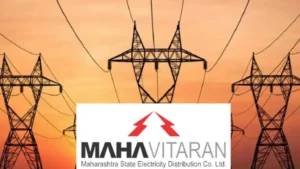8 Smart Hacks to Protect Your Phone and Laptop During Monsoon: Prepare Before the Rains Hit

8 Smart Hacks to Protect Your Phone and Laptop During Monsoon: Prepare Before the Rains Hit
Devices like smartphones, laptops, tablets, and smartwatches are no longer luxury items—they’ve become essentials that we carry wherever we go. Whether you’re heading to work, traveling, or just stepping out for errands, your gadgets go with you. But when the rainy season rolls in, these daily-use electronics face serious risk. Moisture, humidity, and sudden downpours can quietly destroy the devices you rely on most.
This guide walks you through practical and easy steps to shield your electronics from water damage during monsoon months—so you stay prepared instead of panicked.
Why Rain Is a Threat to Electronics
It doesn’t take a full-on downpour to damage your gadgets. Even light drizzles, humid environments, or accidental water exposure while charging can cause major problems. Water seeps into ports, corrodes internal parts, and leads to short circuits or permanent failure. Preventing such damage is easier—and cheaper—than dealing with repairs.
Devices You Need to Be Careful With During Monsoon
- Smartphones
- Laptops
- Tablets
- Smartwatches
- Televisions
- Refrigerators
- Air Conditioners and Coolers
- Washing Machines
- Earbuds and Earphones
- Essential Tips to Protect Your Devices This Monsoon
1. Use a Water-Repellent Screen Protector
A screen protector with water-repellent coating adds an extra layer of defense against splashes or droplets. It doesn’t make your device waterproof but helps avoid moisture build-up on the screen.

2. Invest in a Waterproof Bag or Sleeve
When you’re carrying your laptop, tablet, or phone outdoors, always store them in a waterproof bag or protective sleeve. Look for bags with roll-top seals or water-resistant zippers for better security.
3. Use Silicone Covers for Added Grip and Protection
Silicone cases for phones, earbuds, and smartwatches offer both shock absorption and basic water resistance. They’re snug, affordable, and offer protection in case the device comes in contact with light rain or wet surfaces.

4. Keep Silica Gel Packs Inside Bags and Drawers
Silica gel packets absorb moisture and help reduce humidity around your gadgets. Place them in your laptop bag, gadget drawer, or wherever electronics are stored.
5. Be Cautious While Charging Devices
Avoid charging your gadgets near windows or in damp areas. Water exposure during charging can lead to electric shocks or short circuits. Always dry the charging port thoroughly before plugging in your device.
6. Clean Devices Regularly with a Microfiber Cloth

During monsoon, condensation and mist may settle on your devices. Use a clean microfiber cloth to wipe them down regularly. Avoid using paper towels or rough cloths that may scratch the surface.
7. Don’t Leave Devices Near Open Windows or Balconies
A common mistake is leaving phones or laptops charging near open windows. Rain or mist can easily sneak in, especially during heavy winds. Always store gadgets away from open or semi-open spaces.
8. Back Up Your Data Before It’s Too Late
Water damage can render your device unusable without warning. Make it a habit to regularly back up data from your phone and laptop to cloud storage or an external drive—especially during the rainy season.

9. Use Waterproof Sleeves or Flip Covers for Tablets
Tablets are often carried in hand and can be exposed to rain quickly. A waterproof flip cover or sleeve ensures that even if you’re caught in a sudden shower, your device remains protected.

10. Protect Earbuds and Smartwatches with Proper Cases
Earbuds and smartwatches are highly vulnerable due to their compact design. Use silicone or waterproof cases for storage. Even if your smartwatch claims water resistance, prolonged exposure can still cause internal wear over time.
Extra Tips to Stay Ahead of Rainy Day Risks
Keep power sockets covered if placed near open areas or on the floor.
Don’t use wet hands to operate or charge gadgets.
Consider buying gadget insurance if you live in a high-rainfall area.
Unplug home appliances during lightning storms to prevent power surge damage.












